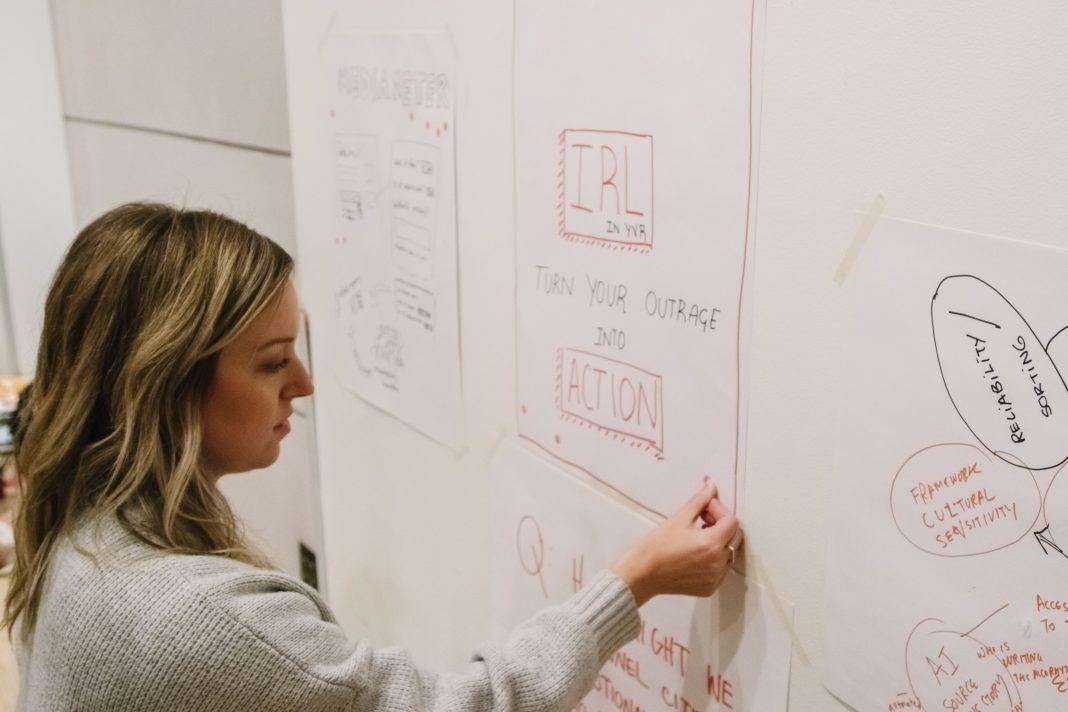By: Agnetha de Sa
A way to address social issues was at the centre of the annual Media Democracy Day conference highlighting local independent and democratic journalism at the Vancouver Public Library’s Central Branch on November 18.
The Vancouver-based leaders in communication ran a series of workshops and roundtables to explore solutions media, a response to social problems that incorporates various forms of communication including journalism, digital art, and public campaigns.
“The reason [solutions media is] so valuable to democracy is that citizens need a clear picture of what’s possible so that they can mobilize, so that they can engage with movements, so they can press for a better future,” said David Beers, an adjunct professor of journalism at the University of British Columbia and the founder of the independent online magazine The Tyee.
The event, a collaboration between the SFU School of Communication, OpenMedia.ca, and the Vancouver Public Library since 2001, has brought local, alternative media as well as scholars, activists, and citizens to discuss the role of media in democracy.
The opening talk incorporated the insights of Angela Sterritt who is a Gitxsan journalist with a long history of working for the CBC and Darin Barney who chairs communications studies at McGill University. The day also explored multiple examples of solutions media, including responses to the housing crisis, the child welfare system in BC, and decolonizing practices in media.
“Solutions journalism needs to be slow journalism.” @bychrischeung #SolutionsMedia #MDDyvr
— Media Democracy Day (@MediaDemocDay) November 18, 2017
The design jam, a brainstorming session hosted by SFU students and the Vancouver Design Nerds, challenged attendees to create solutions to issues faced by the media and how the public can engage in the solutions media production. A series of roundtable events also explored how the media can improve representation for underrepresented or misrepresented communities. Beers explained that solutions media is a “future focused” endeavour.
“It’s about exploring in [a] tangible, fact-based way, what is possible,” he noted.
During the opening talk, the speakers Sterritt and Barney offered a critical consideration of how solutions media has a role in some of the pressing issues society faces.
Barney addressed the potential for climate change to alter the relationship between politics and communication, noting the recent decision by the federal government to approve two major pipeline projects — including the Kinder Morgan Trans Mountain expansion project — was not “swayed by political arguments,” according the the Prime Minister’s statement.
“What I want to highlight is the manner in which this disavowal of political implications of these decisions is symptomatic of a radically impoverished understanding of what politics actually means or could mean in relation to energy and its infrastructures and the environment,” Barney stated.
“Advocacy journalism is not an issue if you’re doing it in service of power.” @kainagata #SolutionsMedia #MDDyvr
— samaah (@samaahjaffer) November 18, 2017
“I think [this is] indicative of the conventional understanding of what politics is and where and how it happens. A limit that has been exposed quite dramatically in relation to the politics of climate change, energy, and its infrastructures.”
Sterritt spoke about solutions journalism and the role of storytelling in the approach which has implications for the relationship between Indigenous peoples and journalism.
“It’s about not predicting answers or solutions but using the same rigour and investigation and curiosity to get it right without falling into poor reporting of the past,” she said.
Referencing the increasing interest in Indigenous-focused stories in media, Sterritt stated that the state of affairs is changing due to the Truth and Reconciliation Commission and Indigenous-led institutions that have created a space for these stories. However, she noted that the relationship between Indigenous peoples and media has not always achieved this progress.
So lovely to hear @AngelaSterritt speak at @MediaDemocDay among amazing, diverse, powerful voices!!
— tanvi (@sometimestanvi) November 18, 2017
“In many ways, Indigenous people are still only in the media when, as esteemed journalist Duncan McCue has reported, we are only one of the four D’s: only when we’re drumming, only when we’re dancing, when we’re drunk, or when we’re dead,” Sterritt noted.
“We have to get out of that crisis reporting, we have to build relationships with communities. So solutions [media] is not about changing our mode of reporting. It’s about shifting the way we report on Indigenous communities since many of us don’t have strong connections to, relationships, or understandings of Indigenous communities at all,” Sterritt explained.
“When we’re talking about solutions journalism, we’re not telling communities what their solutions are. We’re not dictating what they should do. That is not our role as journalists — our role as journalists is to dig into the truth and find out what other people are doing to create change.”
“It’s important for people to know that you don’t need to be Indigenous to understand, relate to, and learn more about these stories.” Sterritt added.




